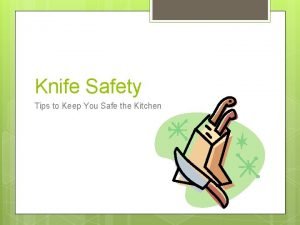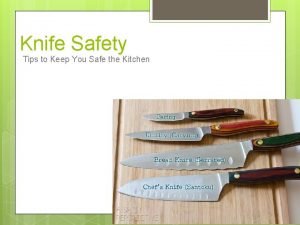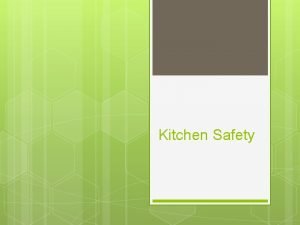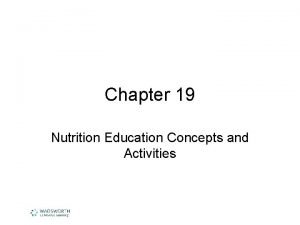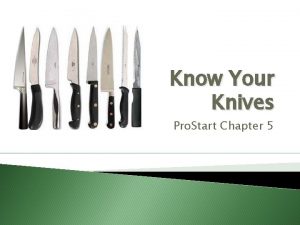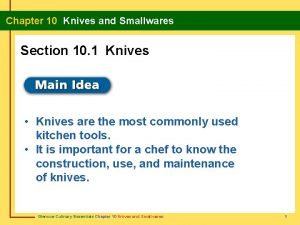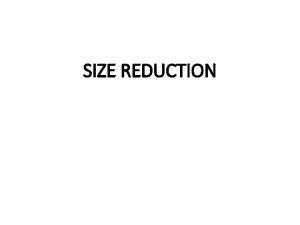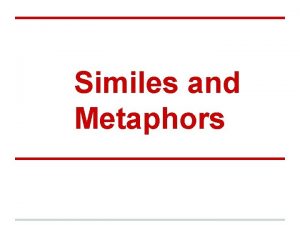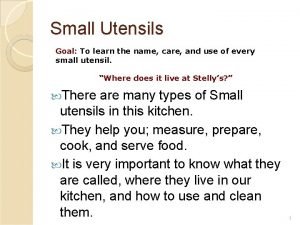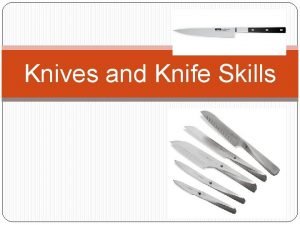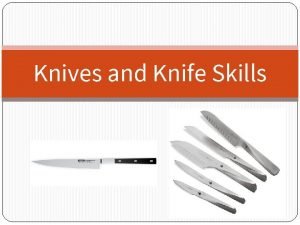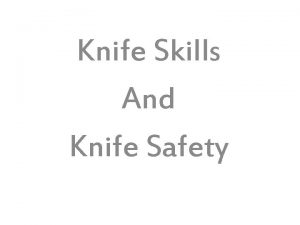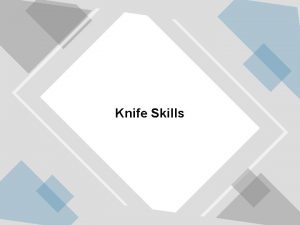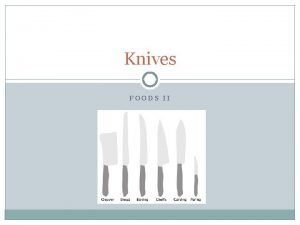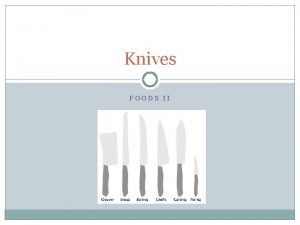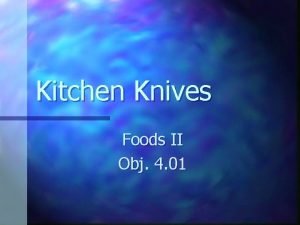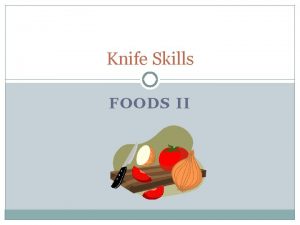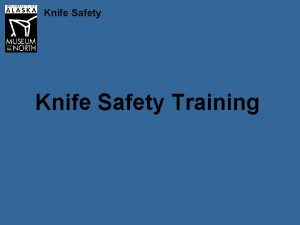Knife Safety Foods Nutrition 1 Types of Knives











- Slides: 11

Knife Safety Foods & Nutrition 1

Types of Knives • Chef’s Knife: All-purpose knife • Bread Knife: Cuts bread & other delicate foods, serrated edge • Paring Knife: Small knife used on fruits & vegetables.

Knife Safety Rules 1. Keep knives sharp 2. Use a cutting board 3. Pay attention

4. Cut away from yourself and others 5. Use knives only for cutting 6. Don’t catch a falling knife

7. Don’t leave knives in a sink 8. Clean knives carefully with the sharp edge away from you 9. Store knives in a safe place

10. Carry a knife properly a. hold it beside you, point down, sharp edge back and away from you. b. don’t swing your arm c. let people know you are walking past them with a knife

How to hold a knife

The chef's knife: The most important kitchen tool

• 1. The sturdy spine of the blade can be used to break up small bones or shellfish. • 2. The front of the blade is suitable for many small cutting jobs. It is particularly useful for chopping onions, mushrooms, garlic and other small vegetables.

• 3. The mid section of the blade is remarkably appropriate for either firm or soft food. The gentle curve of the blade is ideal for mincing of leeks, chives, parsley etc. Caution: Cook's knives purposely have been ground extra thin for the ultimate cutting performance. Chopping through bones will damage the fine edge. For doing this please refer to our assortment of cleavers.

• 4. The weight distribution is optimal at the heel of the blade and is used to chop through extremely firm food objects. • 5. The wide flat surface of the blade is suitable for flattening and shaping of meat cuts such as filets as well as for lifting of the chopped product.
 Kitchen knife safety tips
Kitchen knife safety tips Knife safety tips
Knife safety tips Knife safety poster
Knife safety poster Knife safety quiz
Knife safety quiz Foods used in nutrition activities should be nutrient-dense
Foods used in nutrition activities should be nutrient-dense Heavy rectangular knives used by butchers
Heavy rectangular knives used by butchers Chapter 10 knives and smallwares worksheet answers
Chapter 10 knives and smallwares worksheet answers Classification of size reduction
Classification of size reduction Simile for boring
Simile for boring Sturmabteilung
Sturmabteilung Ernst rohm cartoon
Ernst rohm cartoon Knives hand tools and small equipments
Knives hand tools and small equipments
